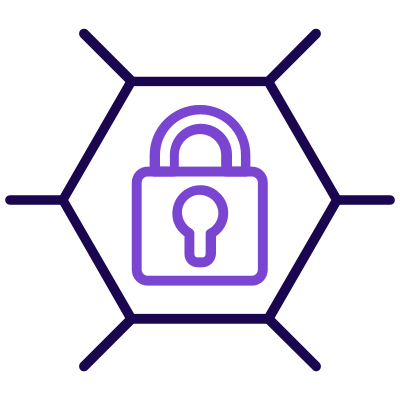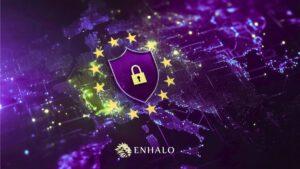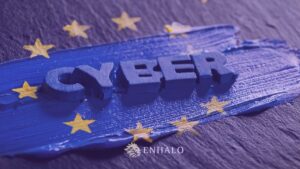The consumer sector is big business – for shareholders as well as hackers. Large companies with multiple brands operate with an unprecedented amount of valuable data, which means a single cyber incident could cost assets and a reputation worth billions of dollars. Consumer businesses are always in danger from cyber-attacks, so their defenses must be strong and resilient to deal with them.
The importance of cybersecurity awareness
Environments are changing as new technologies continue to emerge. Consumer companies often need to be at the forefront of these to remain competitive and accessible. However, cybercriminals seek out weaknesses in an organization’s infrastructure, whether through vulnerable old tech that’s been forgotten or the shiny new upgrades in the system that still may not yet be fully understood. These are easy entry points for hackers.
Protecting consumer information translates to safeguarding a business’ reputation and viability. Consumers place a lot of trust and money in their favorite brands, which should be honored by the brand itself – if not for the customer, then for the security of the business. An authentic, tangible way this can be honored is through acute awareness and prioritizing cybersecurity within all industry sectors, meaning everything and everyone internally and externally.
Why consumer goods companies need to be cyber resilient
It may not be obvious how a consumer goods business differs from another in terms of the risks associated with it, but when broken down, each process and requirement carry its own set of risks.
Customer Trust
Customer loyalty is hard-won in today’s ultra-competitive consumer market. While good faith in the product itself is critical, so is trust that the business is taking all the cybersecurity measures and precautions to keep customer data safe.
Managing cyber risk is a core part of consumers’ experience. One bad experience because of a cyber incident will more than likely erode your brand and consumer trust resulting in an immediate loss in revenue and the fresh struggle to win both new and old customers.
The rise of online fraud and data breaches in an already skeptical world transitioning to data-centricity means businesses need to go the extra mile to assure and instill confidence, so their customers stay.
If you want consumers to perceive your product as world-class, the expectation is that cybercriminals cannot exploit that product.
Connected Products
Connected products offer consumers “smarter” lifestyles and unlock ways to minimize operational inefficiencies. The boom of Internet of Things (IoT) devices, like Hive thermostats and security cameras, present in the home today have made it easier for businesses to connect in a predictable and standardized way.
Unfortunately, digital innovation comes with more than just profit potential. As the landscape changes to be heavily focused on data acquisition, management, and migration to the cloud via the many connected products available, your business also has more risks to manage.
These technologies require more significant aggregation and storage of sensitive customer information across a growing array of new touchpoints, some of which will come from beyond your own network and infrastructure, overexposing consumers with more than stolen credit cards and identity theft.
For instance, continuous news of breaches through connected devices will not only threaten sales of a product or brand, but also tarnish the broader perceptions consumers have of connected products in general – jeopardizing billions in future sales growth.
Bad actors and hackers are continually finding new ways to infiltrate networks, particularly as new tech is introduced into the mix. So, your cybersecurity needs to remain as creative and up to date as them.
Payments
As open banking and digital wallets are making the payment process ever slicker and easier, any new payment technology brings with it a bag of threats. Interception at the point of payment is a hot target for cyber thieves, whether through stealing credit card data or redirecting to a fake checkout.
Teams
‘We are only as strong as the weakest link,’ or so the saying goes. For this reason, recruiting and maintaining strong cybersecurity talent is critical. Implementing a culture of cybersecurity best practice also needs to go beyond just the IT team.
Your third-party vendors must also be mandated to follow the same cybersecurity standard and culture as your organization.
Intellectual property
Intellectual property (IP) is arguably one of the most valuable assets to a business, driving innovation and competition – and revenue. It can constitute more than 80 percent of a company’s value.
For a consumer product company, IP might be the critical data about a specific product formula or a new line of products on which the company foundation was built. It might even be that secret ingredient to the fantastic recipe consumers associate with the brand. Managing access and storing this information needs to be a high priority.
This said, the lines are blurring more between what is considered a company’s identity and core USP. As Apple has made clear, its data privacy policy is now one of its strongest value propositions; so what separates PII from IP?
PII is one of, if not the most, targeted data sets in today’s ransomware because of how lucrative personal data is for bad actors. While big businesses like Nike and Apple are consumer-focused brands, technology is the driving force behind their success, which means far more defenses need to be implemented in protecting their identity.
The best approach to cyber risk
All in all, good cyber resilience for a consumer business requires the understanding that as new technologies are introduced to improve customer journeys and streamline internal processes, further security technologies and cyber measures need to be undertaken at the same time to protect what is valuable.
Strong reactivity is vital for cyber risk management in the face of a live threat. However, being proactive means minimizing risk from the outset and being fully prepared when a threat is detected.
Pen Testing
Penetration Testing (or pen testing for short) is also known as ethical hacking. Hiring a team or a skilled individual to hack and even attack your system exactly as a malicious hacker would, arm a business with the knowledge to fill security vulnerability gaps. Cybersecurity best practice views pen testing or vulnerability testing as the bare minimum and an activity that should be done annually. Alongside this, vulnerability assessments looking at your network as a whole should be completed quarterly.
Security Awareness Training
One in three businesses fall victim to a cybersecurity breach, but of those, four out of five are the direct result of human error. Stark, we know.
Creating a culture of cybersecurity awareness starts with security awareness training and testing for all employees. For many, cybersecurity threats are mainly considered as hackers in dark rooms coding their way through to the network. While this isn’t wrong, educating all staff about how bad actors take advantage of simple human error can change their behavior.
For example, emphasizing the importance of strong password authentication and the real-world risk of phishing emails can help bring it home and be more relatable. This initiates a change in everyday behavior and security culture.
In other words, turn your staff into your strongest security asset.
Investing in cybersecurity leadership
Compliance regulations and standards continue to evolve as technology advances, and so too the hacking methods used. If hiring a full-time CISO isn’t feasible, find a virtual CISO who still helps ensure that regulations are continuously met and that an adequate risk management strategy is implemented that aligns with all these continuous changes.
Hiring someone dedicated to data security, whether long- or short-term, means that business risk is reduced and that stakeholders and customers alike can continue as they were with complete confidence; they’re in safe hands.
Be prepared
It’s simply not worth the risk of not having strong cybersecurity measures in place within a consumer goods business. One incident can lead to irreparable damage to reputation and significantly impact the bottom line through long-term loss of customers, customer compensation, and compliance fines. We’ve seen this time and time again.
As business productivity is returning to pre-pandemic levels but with the added cyber risk of more remote working, cybersecurity priorities need to be:
- Manage cyber risk as a team with a strong balance between the rapid adoption of technology and appropriate cyber risk management.
- Increase preparedness with cyber risk management strategies in the enterprise and emerging technologies as they are deployed.
- Monitor people, applications, systems and the external environment to detect incidents more effectively.
- Develop threat intelligence to understand harmful behavior and top risks.
- Be prepared and decrease the business impact of incidents before they escalate.
- Capture lessons learned to improve security controls.
In a nutshell, always #BeCyberSmart.







